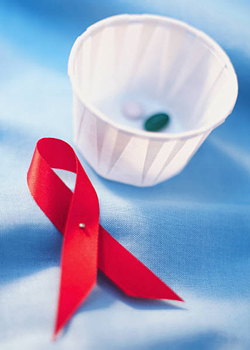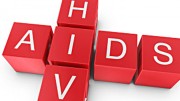Although we are 30 years into the AIDS epidemic, we still do not have consensus around precisely what “ending the epidemic” means. Yet there are major policy initiatives and programs underway whose aim is to end the epidemic in the next 15 years―if not sooner. As 2014 comes to a close, we thought it might be interesting to look at these initiatives and see how they are doing.
One common theme or slogan for ending AIDS is “getting to zero,” which was embraced by the Joint United Nations Programme on HIV/AIDS (UNAIDS) in its 2010 strategic plan for the global HIV/AIDS response during the five-year period from 2011 through 2015. In this case, “getting to zero” specifically refers to three long-range goals: zero new HIV infections, zero AIDS-related deaths, and zero discrimination.
Other related themes include “turning the tide,” “bending the curve,” and “raising the bars.” Generally speaking, “turning the tide” and “bending the curve” both refer to reversing major trends in the epidemic. For example, although the growing availability of antiretroviral treatment (ART) has substantially reduced the number of HIV-related deaths in recent years, the reduction in new HIV infections has not kept pace. As a result, HIV prevalence―the number of people living with the virus―has continued to increase in the U.S. and many other nations worldwide. In this context, success would be reducing new HIV infections to such an extent that―for the first time ever―the total number of people living with HIV will actually decrease with each passing year. Many would consider this milestone to mark the beginning of the end of the HIV/AIDS epidemic.
The term “raising the bars,” which has been adopted by the National Alliance of State and Territorial AIDS Directors (NASTAD), refers to the bar charts that are commonly used to represent the continuum of HIV care―sometimes also referred to as the HIV treatment cascade. The U.S. Centers for Disease Control and Prevention (CDC) describes the continuum of HIV care as a model used “to identify issues and opportunities related to improving the delivery of services to people living with HIV across the entire continuum of care. . . The HIV care continuum is a way to show, in visual form, the proportion of individuals living with HIV/AIDS who are engaged at each stage of HIV care.”
In its most common representations, the continuum of HIV care has four or five main steps or stages, each represented on a bar graph as a percentage, a total number, or both. For example, during the past month, CDC released updated continuum of HIV care data for 2011. Of the more than 1.2 million people living with HIV in the U.S.:
- 86% (about one million persons) had been diagnosed with the infection;
- 40% (478,000) were engaged in HIV medical care;
- 37% (442,000) were ART; and
- 30% (362,000) achieved viral suppression―a very low level of HIV associated with good health outcomes and a major reduction in HIV transmission.
HIV researchers and policy-makers have relied increasingly on continuum of care data to monitor access to, and success of, HIV testing, care, and drug treatment in different geographic regions and demographic groups―with breakdowns by age, gender, race/ethnicity, and mode of exposure. The continuum also provides a convenient way to track progress in HIV testing, care, and treatment over time, and to identify areas that need improvement and may require additional attention and resources.
Resources Focusing on U.S. Efforts to End the HIV/AIDS Epidemic
The National HIV/AIDS Strategy
Launched in July 2010, the National HIV/AIDS Strategy (NHAS) established a framework for the U.S. response to AIDS. It included three primary goals that continue to shape U.S. HIV/AIDS policy:
- reducing the number of people who become infected with HIV;
- increasing access to care and optimizing health outcomes for people living with HIV; and
- reducing HIV-related health disparities.
In addition, the vision driving the NHAS is for the U.S to “become a place where new HIV infections are rare and when they do occur, every person, regardless of age, gender, race/ethnicity, sexual orientation, gender identity, or socio-economic circumstance, will have unfettered access to high quality, life-extending care, free from stigma and discrimination.” A companion document, the NHAS Federal Implementation Plan, describes approaches for measuring progress toward the NHAS goals.
Achieving an AIDS-Free Generation – This 2013 report from the Presidential Advisory Council on HIV/AIDS (PACHA) describes PACHA and its functions, reviews progress toward key NHAS goals for the U.S., and discusses the U.S. role in the global response to HIV/AIDS. The 76-page report also includes 15 policy recommendations whose implementation “is imperative to achieving the NHAS goals,” according to PACHA.
HIV Continuum of Care – This web page from the U.S. Department of Health and Human Services blog.AIDS.gov site aggregates blog postings related to the HIV continuum of care in the U.S. As of December 2014, the page had more than 40 blog postings on this topic.
Raising the Bars: Accelerating HIV Prevention and Care in the United States and Raising the Bars: Policy Recommendations to Enhance Health Departments’ Efforts to End the HIV Epidemic – These two reports, published in early 2014 by the National Alliance of State and Territorial AIDS Directors (NASTAD), recommend policies to enhance state health departments’ efforts to reach the goals of the National HIV/AIDS Strategy (NHAS). In the time since the release of these report, the NASTAD blog has repeatedly revisited the “Raising the Bars” theme, with postings on improving different steps along the U.S. continuum of HIV care, addressing HIV-related stigma and discrimination, meeting the needs of particular at-risk populations, supporting community mobilization and outreach, and more effectively monitoring and using community-level HIV data.
New York State’s “Bending the Curve” Program – In July 2014, New York Governor Andrew Cuomo announced a three-point program “to bend the curve and decrease new HIV infections to the point where the number of people living with HIV in New York State is reduced for the first time.” The Cuomo Administration is defining the end of the AIDS epidemic in New York as the time when the state’s total number of new HIV infections falls below the number of HIV-related deaths. The three points in the Bending the Curve program are: “1) identifying persons with HIV who remain undiagnosed and linking them to health care; 2) linking and retaining persons diagnosed with HIV to health care and getting them on anti-HIV therapy to maximize HIV virus suppression so they remain healthy and prevent further transmission; and 3) providing access to pre-exposure prophylaxis for high-risk persons to keep them HIV negative.” A major goal of the New York plan is to reduce the number of new HIV infections to 750 by the year 2020. In October, The Governor announced the creation of an Ending the Epidemic Task Force, which will develop and issue recommendations and draft the state’s blueprint for ending the epidemic.
“Getting to Zero” Plan in San Francisco – In 2014, San Francisco also launched a “Getting to Zero” strategic plan with the ultimate goals of zero new HIV infections, zero HIV-related deaths, and zero HIV-related stigma. In the short term, San Francisco’s Getting to Zero is focusing on three main initiatives: 1) expanding access to pre-exposure prophylaxis for San Franciscans at-risk for HIV infection; 2) “RAPID ART”: Early diagnosis and treatment of HIV, resulting in improved health of newly infected persons and reduced risk of HIV transmission; and 3) retention in HIV care. To coordinate these efforts and ensure community input and involvement, a Getting to Zero Consortium has been established. The Consortium partners include the San Francisco Department of Public Health, other city and county agencies, AIDS-service organizations, community-based organizations, area universities and colleges, HIV care and prevention planning councils, and healthcare organizations and providers.
Exit Strategy: Ending the AIDS Epidemic in Black America – This 84-page report was published by the Black AIDS Institute in 2012. It outlines a four-part plan for ending the epidemic: 1) making HIV testing “a routine, frequent and fundamental component of health care for Black Americans”; 2) connecting all persons who test positive for HIV to comprehensive medical care; 3) expanding HIV prevention strategies to include both traditional approaches and newer biomedical strategies; and 4) maintaining an ongoing commitment to HIV prevention and treatment research.
G2Zero (Getting to Zero) – Web page describing an AIDS United capacity-building initiative “that specializes in helping CBOs implement creative, cost-effective, and time-proven approaches that reduce new HIV infections and improve the quality of life for people living with HIV. We do this by providing no-cost training and technical assistance on High Impact Prevention and Public Health Strategies, such as the CDC’s Effective Behavioral Interventions and time-tested organizational development tools.”
Resources Focusing on Global Efforts to End the HIV/AIDS Epidemic
Fast-Track: Ending the AIDS Epidemic by 2030 – This 40-page report from the Joint United Nations Programme on HIV/AIDS (UNAIDS) was issued on World AIDS Day 2014. It describes global targets for ending the AIDS epidemic by 2030. These include the previously established “90-90-90” targets for 2020 and new “95-95-95” targets for 2030. Specifically, the 90-90-90 targets are to increase HIV testing, access to care, and maintenance in care such that, by 2020:
- 90% of all people living with HIV will know their HIV status;
- 90% of all people with diagnosed HIV infection will receive sustained antiretroviral therapy (ART);
- 90% of all people receiving ART will have viral suppression; and
- New adult HIV infections will be reduced more than 75% to 500,000 worldwide.
Reaching these 2020 targets would prevent nearly 28 million new HIV infections and 21 million deaths by 2030, according to UNAIDS. It would also lay the groundwork for meeting even more ambitious targets for 2030: 95% of those infected knowing their HIV status; 95% of those diagnosed receiving sustained ART; 95% of those on ART achieving viral suppression; and reducing annual new adult HIV infections to just 200,000. The report warns that, without further scale-up of HIV testing, treatment, and ongoing care, “the AIDS epidemic will continue to outrun the response, increasing the long-term need for HIV treatment and increasing future costs.”
90-90-90: An Ambitious Treatment Target to Help End the AIDS Epidemic – This UNAIDS report, issued in 2014, launched the 90-90-90 global targets described above and presented evidence indicating that these goals are achievable. According to UNAIDS, “Whereas previous AIDS targets sought to achieve incremental progress in the [global AIDS] response, the aim in the post-2015 era is nothing less than the end of the AIDS epidemic by 2030.”
Getting to Zero: 2011-2015 Strategy – Published in 2010, this 64-page planning document from UNAIDS outlined the following “strategic directions” for the global response to HIV/AIDS for that 5-year period: 1) revolutionize HIV prevention; 2) catalyze the next phase of treatment, care, and support; and 3) advance human rights and gender equality for the HIV response.
The GAP Report, issued by UNAIDS in July 2014, analyzes the factors that contribute to the widening gap between people who are gaining access to HIV prevention, treatment, and care and those who have been left behind. There is a brief summary of The GAP Report in the July/August 2014 issue of the Health Disparities Update newsletter.
Close the Gap This World AIDS Day (2014) – Halting and reversing the global AIDS epidemic is one of the United Nations’ Millennium Development Goals for 2015. This page describes the importance of “closing the gaps” in HIV testing and access to treatment and lists 10 specific goals for 2015.
Getting to Zero at Work – This campaign of the International Labor Organization (ILO) addresses HIV/AIDS “through the promotion of human rights, job security, and enhancing access to HIV prevention, treatment, care, and support services from a workplace perspective.” It draws upon ILO’s Recommendation concerning HIV and AIDS and the World of Work, 2010, described as “the first international labor standard on HIV and AIDS in the world of work.”
An Action Agenda to End AIDS – The Agenda, which was launched by The Foundation for AIDS Research (amfAR) and AVAC at the 2012 International AIDS Conference, outlined “key actions that need to be taken in 2012–2016 to lay the foundation to end the AIDS pandemic.” AVAC and amfAR have since published a 2013 Action Agenda update – Where Are We in Realizing the Promise of Beginning to End AIDS? – and Data Watch: Closing a Persistent Gap in the AIDS Response. In addition, AVAC has created two infographics that summarize key themes in graphic format: A Three-Part Agenda for Ending AIDS 2014 and The Tipping Point: Moving From Rhetoric to Real Milestones for Ending AIDS.
The Investment Case for Global AIDS Funding: Getting Smarter, Showing Results – This 4-page issue brief from amfAR documents reductions in HIV infections and associated cost savings in developing nations. The brief’s authors contend that, “Strategically scaling up HIV treatment and combining it with a set of core HIV prevention interventions would turn the tide against HIV and lower the cost trajectory for the AIDS response.”
10 Essential Steps for “Getting to Zero”: Principles and Recommendations for Addressing Key Populations at the UN 2011 High Level Meeting on AIDS – This 2-page policy brief was produced by the Center of Excellence for Transgender Health, Global Action for Trans Equality, the International Network of People Who Use Drugs, the Global Forum on MSM and HIV, and the Global Network of Sex Work Projects.
Controlling the HIV Epidemic with Antiretrovirals – July 2014 supplement issue of the journal Clinical Infectious Diseases. The issue’s feature articles include:
- Controlling the HIV Epidemic with Antiretrovirals: Moving From Consensus to Implementation
- Leveraging HIV Treatment to End AIDS, Stop New HIV Infections, and Avoid the Cost of Inaction
- Global Response to HIV: Treatment as Prevention, or Treatment for Treatment?
- A Paradigm Shift: Focus on the HIV Prevention Continuum
- Modeling Scenarios for the End of AIDS
- Addressing the Achilles’ Heel in the HIV Care Continuum for the Success of a Test-and-Treat Strategy to Achieve an AIDS-Free Generation
- Who Pays and Why? Costs, Effectiveness, and Feasibility of HIV Treatment as Prevention
Getting to Zero web pages from AIDSmap.com – Tied in with a World AIDS Day theme, these web pages succinctly describe different “Getting to Zero” goals, and combine educational and fund-raising messages that may be readily adapted by agencies and organizations involved in HIV/AIDS work.
Getting to Zero – This web page was developed by AVERT.org to mark World AIDS Day 2012. It includes links to more than 30 “Reflections on the Epidemic” by global leaders, experts, activists, physicians, and people personally affected by HIV and AIDS.
*Eric Brus is the Director of HIV Health Promotion of AIDS Action Committee. This report is produced by the Health Library of the AIDS Action Committee in collaboration with the New England AIDS Education and Training Center Minority AIDS Initiative Project. The full version is available online.
[From a News Release]








